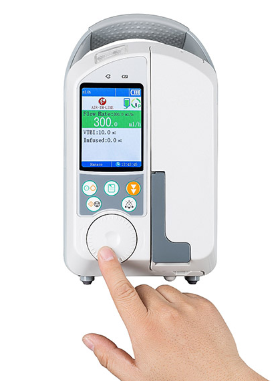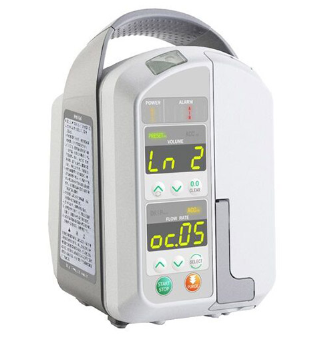How Veterinary Infusion Pumps Have Led To Improvements In Vet Safety
Jun. 14, 2022
Veterinary Infusion Pump
It happens that a sick animal needs an intravenous infusion of drugs in a small volume and at a constant low speed. Previously the owner had to monitor the dropper continually, sometimes counting the number of drops with a stopwatch in his hands. Fortunately, this is a thing of the past.
The veterinary infusion pump is a pump for dosed, long-term administration of various medical solutions intravenously or for the introduction of nutrient solutions to severe patients. A veterinary infusion pump is a system that can administer drugs in several ways: bolus, drip, and volume. Most often, infusion pumps are used for intravenous infusion of drugs, but can also be used for epidural, subcutaneous, enteral, and other accesses.
There are now infusion pumps (perfusion, infusion syringe pumps) that allow you to administer medications ad solutions intravenously at a certain speed, and some models even allow you to calculate the rate of administration of the drug depending on the concentration of the solution, the weight of the animal and the dosage received. An infusion pump is convenient for infusing small puppies and kittens.
Features of a Veterinary Infusion Pump
The veterinary infusion pump is used in intensive care and anaesthesia. High precision electronics create complete safety for the patient. Using the program, the vet sets specific parameters: the dose of the drug, the speed of its administration, the time of the infusion. Using the program, it is possible to infuse several medicines at once; the pre-set electronic program will turn on the device promptly, calculate the dose of medicine and being infusion at a certain speed. Such infusions can be carried out at any time of day according to the parameters set by the electronic system.
The advantage of using a veterinary infusion pump compared to a conventional drip system is that the animal is in a position convenient for it, which allows the device to be used for resting animals and often changing their positions.
The infusion pump is configured so that they respond quickly and report with a sound signal about a blockage, obstruction to the flow of the infusion solution and inform you about the completion of the infusion. The infusion pump has a safe syringe change system, automatically locks the syringe, and determines it volume, which ensures a constant solution. An infusion pump has settings to calculate the dosage of the drug, considering the weight of the patient. The veterinary infusion pump operates from a 220V network or autonomously from the battery for a few hours, which allows for infusion in any convenient place.
Veterinary Infusion Pump
Delivering a CRI via IV fluids
Constant rate infusions (CRIs) are used to manage a wide variety of conditions in veterinary medicine. Their use is especially beneficial in drugs with a short half-life.
By removing the need for frequent redosing, a CRI makes drug administration easier and less prone to error.
Even drugs with long half-lives, however, may be delivered via CRI to maximize clinical benefits while minimizing the risk of side effects.
Before adding any medication to a pet's IV fluids, it's important to check labels to ensure that the drug is compatible with the fluids (and fluid additives) the pet is receiving. As long as no incompatibility is noted, this is often the preferred method for delivering a CRI.
Now, let's assume that the 10 kg dog from the above example is receiving maintenance fluids at a rate of 25 ml/hr. How much lidocaine (20 mg/ml) should you add to a 1 L bag of fluids to deliver a lidocaine CRI at a dose of 10 ug/kg/min?
You have already calculated that the dog needs 0.3 ml/hr of lidocaine, but how can you use this knowledge to determine how much lidocaine to add to the fluid bag?
First, determine how many hours the bag of fluids will last the patient. You can do this by dividing the volume of the bag by the fluid rate:
(1000 ml) / (25 ml/hr) = 40 hours
Next, determine the drug volume that must be added to provide 40 hours of continuous therapy for the patient:
40 hrs x 0.3 ml/hr = 12 ml
Therefore, you must add 12 ml of lidocaine to the 1 L fluid bag in order to provide a CRI of 10 ug/kg/min lidocaine for the next 40 hours. Before adding your lidocaine, however, it is important to remove 12 ml of fluids from the bag. (This ensures that your final volume is 1000 ml and not 1012 ml!)
We are a veterinary infusion pump supplier. If you are interested in our products, please contact us now!








